All About Different Types Of Kitchen Knives And Their Purpose
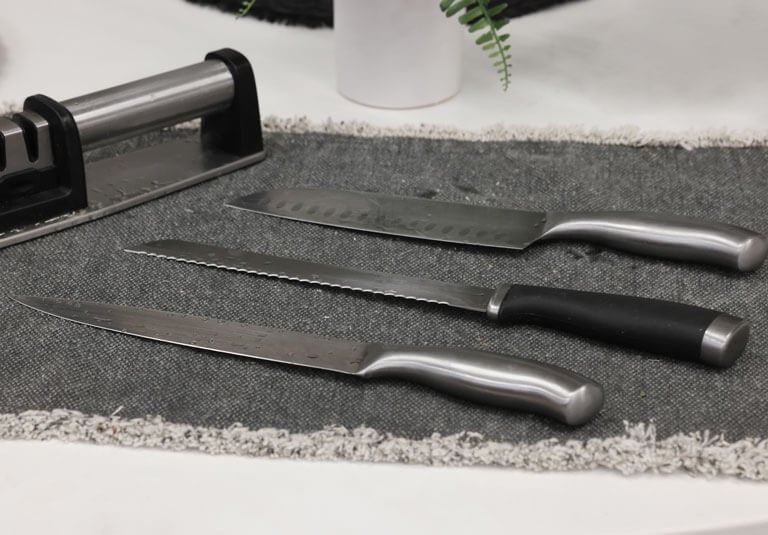
Types of Knives Table of Contents
Different Types of Kitchen Knives Overview
In the culinary world, having a good set of kitchen knives is essential for efficient and precise food preparation. However, with so many different types of knives available, it can be overwhelming to understand their specific purposes. With that being said, today I will provide a comprehensive guide to help you understand the different kitchen knives and their purpose within the kitchen.
Kitchen Knives Explained Video
The Different Types Of Kitchen Knives and Their Purpose
There are different kitchen knives for different uses in the kitchen, there are also different materials used to make each type of knife. Kitchen knife blades are commonly made from stainless steel or carbon steel. Stainless steel offers excellent durability, corrosion resistance, and ease of maintenance. Carbon steel blades, on the other hand, provide superior sharpness and edge retention but require more care to prevent rusting. Both can be sharpened at home if needed.
-
Paring Knife:
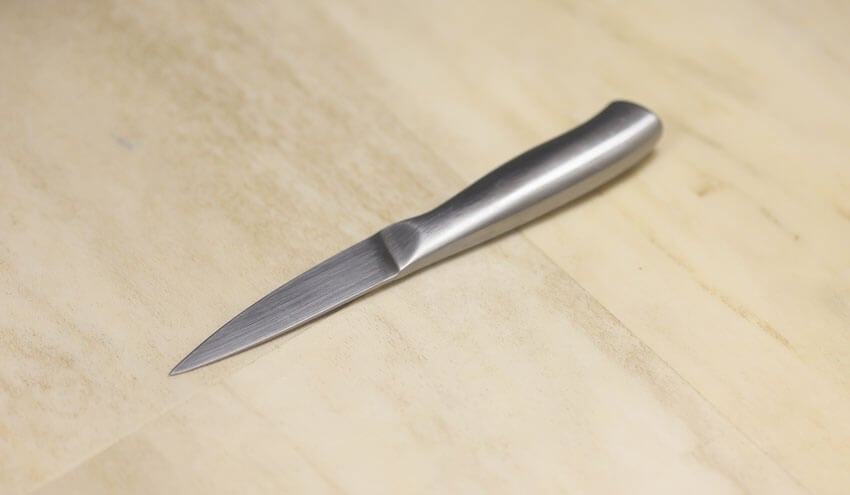
Paring Knife
The paring knife is a small, versatile knife with a pointed tip. It is primarily used for delicate tasks such as peeling, coring tomatoes, and cutting smaller items like mushrooms, onions, or shallots. This knife is also popular for creating decorative fruit garnishes.
-
Serrated Edge Knife/Bread Knife:
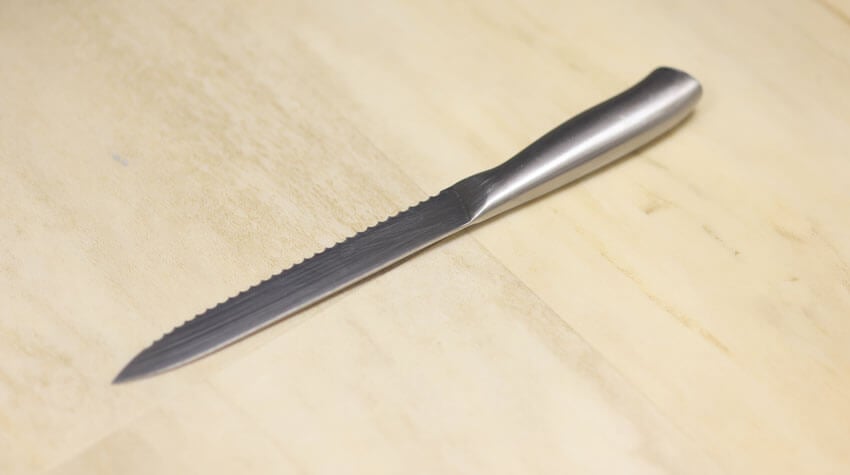
Serrated Blade Bread Knife (also used for tomato)
Featuring a blade with serrated edges, this knife is perfect for cutting through hard crusts or slicing bread without crushing it. It is also useful for tackling other tough items, like baguettes or hors d’oeuvres. The serrated blade bread knife is also used to cut tomato.
-
Chef Knife/French Knife:
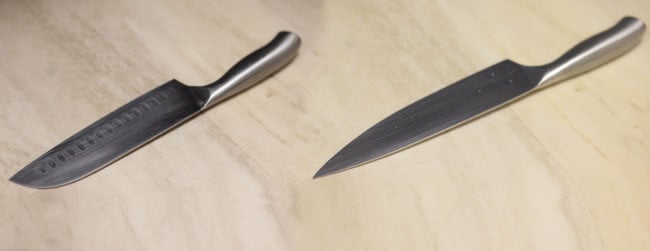
French knife with indentations (left) to release air and prevent vegetables from sticking to the knife blade.
Also known as a chef’s knife, the French knife is a workhorse in the kitchen. With its broad blade and pointed tip, it is suitable for a wide range of tasks, and is versatile for everyday kitchen use. From slicing vegetables such as onions, tomatoes, and potatoes to chopping carrots and celery, the French knife is your go-to tool for everyday cooking. There is also a french knife with indentations to release air while using, so that the food does not stick to the knife.
-
Carving Knife:
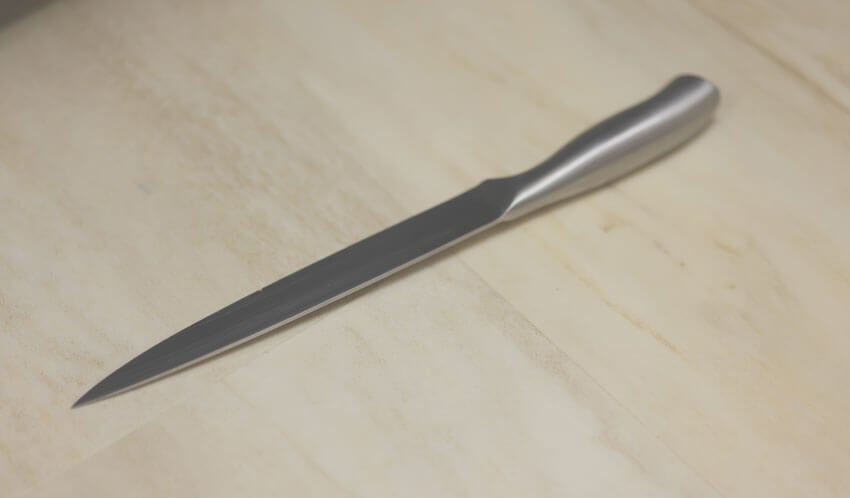
Carving Knife
Designed for precision, the carving knife is typically longer and narrower than other knives. It is ideal for carving or slicing cooked meats, such as beef or ham. Additionally, its thin and flexible blade makes it suitable for filleting fish .
-
Curved Boning Knife:
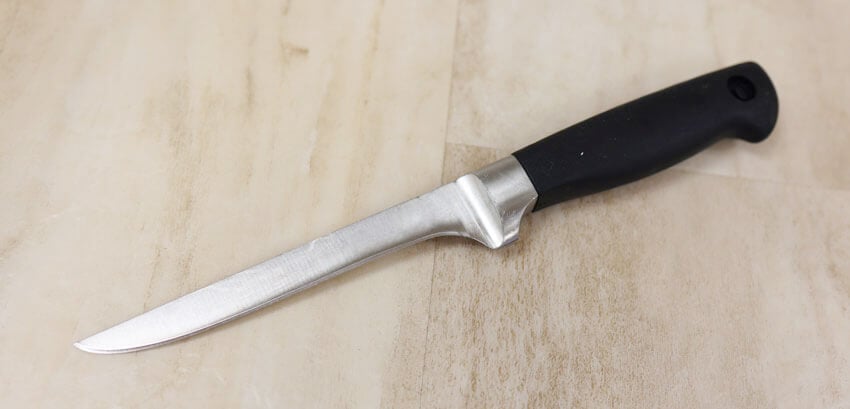
Curved Boning Knife
A curved boning knife is a specialized kitchen tool designed for removing bones from meat, poultry, and fish. Its unique curved blade and flexibility make it ideal for precise and efficient boning.
-
Cleaver Knife:
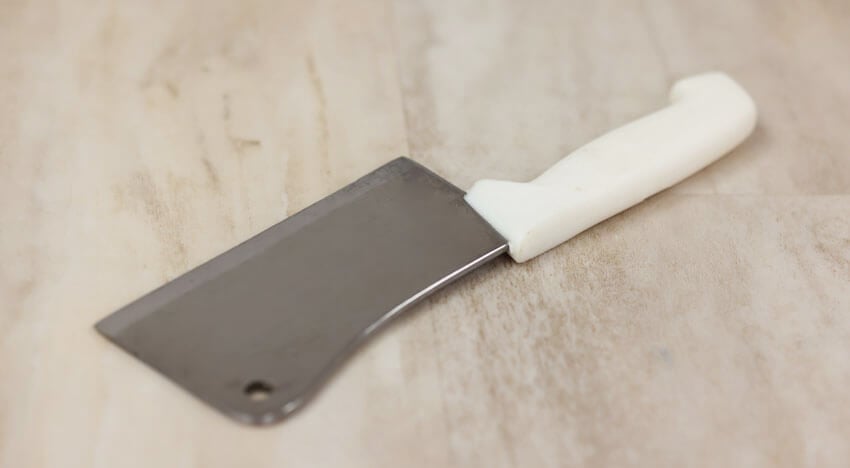
Cleaver Knife
A cleaver knife is a heavy, rectangular-shaped knife primarily used for butchering and meat preparation tasks. It is designed to cut through tough animal parts and bones efficiently. Cleavers are also suitable for chopping vegetables, smashing garlic, tenderizing meat, and navigating hard materials. They have a significant role in Chinese cuisine and are versatile tools in the kitchen. Proper handling and caution are necessary when using cleavers due to their weight and sharpness.
-
Slicing Knife:
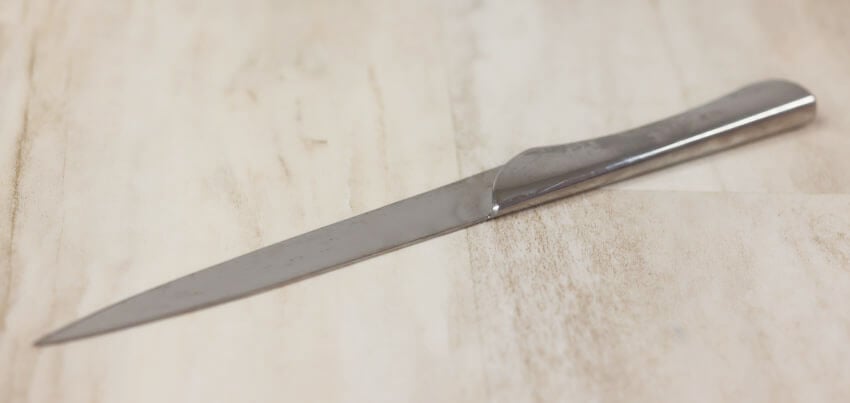
Slicing Knife
The main purpose of a large meat slicing knife is to carve and slice cooked meats, such as roasted beef, ham, turkey, or whole roasted poultry. It is specifically designed to create thin, even slices of meat without tearing or shredding.
Using Knives Safely with Cutting Gloves
These cutting gloves provide an extra layer of protection, minimizing the chances of accidental cuts. And to be extra safe, double up the glove by adding an additional layer of safety by wearing a food handling glove on top of the cut glove. This ensures a secure grip while protecting your hands during the sharpening process.
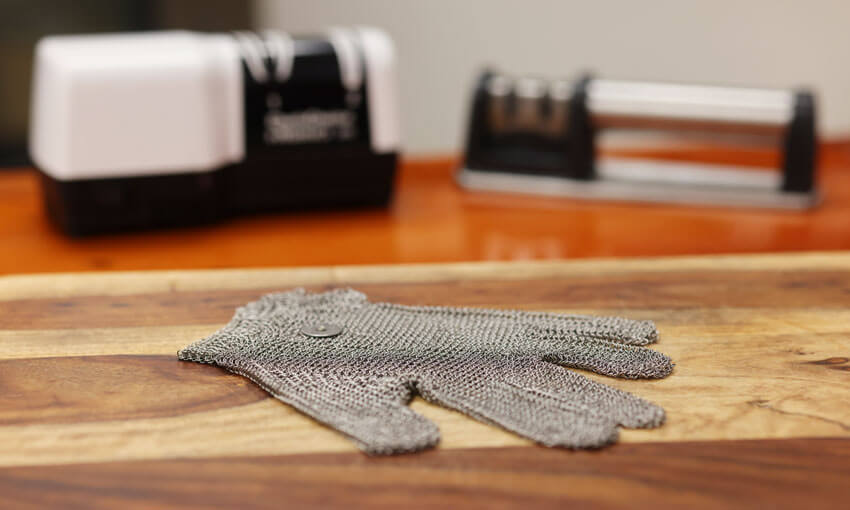
Mesh Steel Cutting Glove for Safety
Mesh Steel Cutting Glove: These steel cutting gloves offer a high level of protection against sharp objects and tend to be more durable and resistant to wear and tear. These can often be found being used in various industries and applications where there is a higher risk of cuts and punctures, for example a restaurant that requires large amounts of prep may utilize these mesh steel cutting gloves over the fiber gloves.
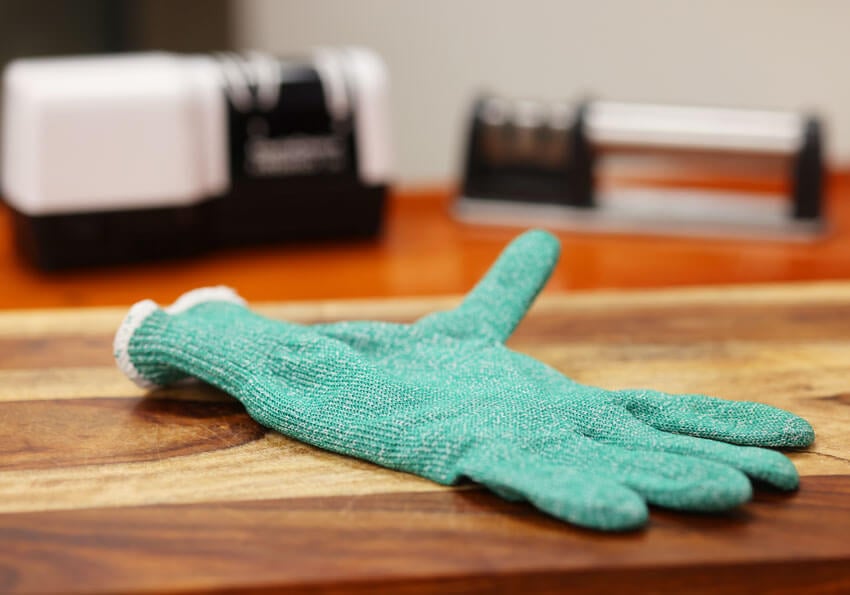
Cut Resistant Fiber Glove
Cut Resistant Fiber Glove: Fiber gloves are commonly made of high-performance materials that are known to be exceptionally strong and provide excellent cut resistance. Fiber gloves come in different cut levels, meaning that the higher cut levels offer increased protection against sharper objects. These gloves are more accessible and more flexible to use, allowing for more precise movements while handling a knife.
Kitchen Knife Care, Maintenance, and Sharpening
Kitchen knife care and maintenance are crucial for extending their lifespan and ensuring optimal performance. By following these essential tips, you can keep your knives sharp, safe, and in excellent condition for years to come. Remember, a well-maintained knife is a chef’s best friend in the kitchen!
Use a cutting board of wood or plastic to prevent excessive wear on the blade.
Honing and sharpening are often confused, but they serve different purposes. Honing, done with a honing steel, realigns the blade’s edge, while sharpening involves removing metal to create a new edge. Honing should be done frequently, while sharpening is typically needed less often. You can sharpen your knife at home.
Store your kitchen knives safely in a knife block or on a magnetic strip.
Different Types Of Kitchen Knives And Their Purpose Summary
By understanding the different types of kitchen knives and their specific uses, you can enhance your culinary skills and make your food preparation more efficient. From the versatile paring knife to the indispensable French knife and the specialized bread knife, each knife has its purpose in the kitchen. So, equip yourself with the right set of knives and enjoy the art of cooking with precision and ease.